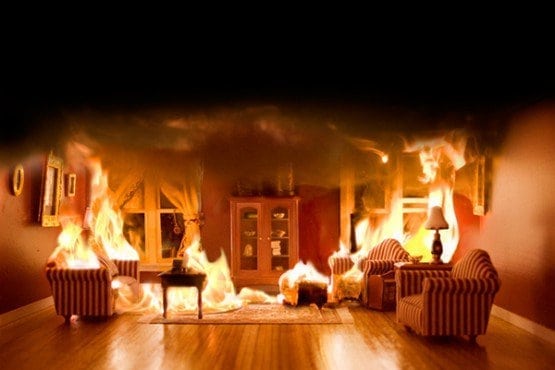There have been quite a few reports in the news recently about landlords and property management companies who’ve received significant fines because they failed to protect their tenants from the risk of fire.
In one case a Reading landlord was fined £177,000 after pleading guilty to four charges under the Regulatory Reform (Fire Safety) Order 2005. A number of serious failings had been identified during a fire and rescue service (FRS) inspection at the property he let as a house of multiple occupation (HMO). Failures included fire alarms not working, a lack of sufficient fire doors and an external escape route that was in a poor state of repair. Prosecution is always the last resort. But, as the Assistant Chief Fire Officer of Royal Berkshire FRS commented in the above case, if any property owner is putting a tenant’s life at risk, a FRS won’t hesitate to prosecute.
It’s a timely reminder of just how essential it is for landlords to keep on top of fire safety in their properties. HMO licensing rules are changing on the 1st October with many more properties requiring a mandatory licence. While fire safety is always an issue for every HMO landlord, if you’re the landlord of a mandatory licenced HMO, your fire safety responsibilities are even more stringent. It’s also around now that many students start living in this kind of accommodation for the first time and it’s unlikely fire safety is the first thing they’re thinking about. Reminding them of their personal responsibilities is one of the priorities of Student Fire Safety Week, due to run from 22th to 28th October. But the week also puts the spotlight firmly on landlords’ fire safety responsibilities.
Do you rent out accommodation?
If you’re a landlord, you should already be aware that good fire safety management begins with completing a thorough, systematic fire risk assessment to identify all fire-related hazards and the associated level of risk. Only then can the actions that need taking be identified.
They’re likely to cover a whole range of measures such as installing and maintaining equipment like fire, smoke and carbon monoxide detectors. Are escape routes in good repair and free from obstructions? Depending on the building, they might need to be identified by signage and illuminated by emergency lighting. Are fire doors required? If you already have them, are they in adequate condition or has wear and tear over the years ended up compromising their ability to slow down a fire? Are suitable fire extinguishers provided for the risks present? Once everything is in place, it all needs to be regularly checked and serviced and the risk assessment needs to be reviewed on a regular basis.
Be aware of the importance of making wise choices about the type of equipment you install too. Many landlords will have the best of intentions when it comes to keeping their tenants safe – but sometimes it’s the products on the market that, unknown to them, are compromising the fire safety in their property. For example, a recent Which? report highlighted the fact that there are several smoke alarms available at the moment which failed to work properly or were too slow to sound an alarm in its tests. In a snapshot taken in June 2018, Which? found that 98 of the 250 cheapest eBay listings for smoke alarms featured one of the products that failed its tests. Even some high street models available didn’t perform as well as should be expected either. Clearly there’s only so much any landlord can do when it comes to checking the quality of detectors and other equipment too. But it always makes far more sense to buy reputable brands and, if appropriate, seek professional guidance when making choices about which equipment to provide.
No landlord should be putting the safety of their tenants at risk and no landlord wants to face significant fines for breaching their fire safety responsibilities. If you need any support ensuring you’re meeting your obligations, remember that we can help you so please do get in touch with us.
One complete fire and security solution
Need a local team to help with fire safety and security?
